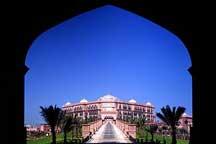 Apr. 16, 2025
Apr. 16, 2025
Weather
The Gaoshan ethnic minority
2009-08-07 10:39 BJTHistory
The name Gaoshan was created for the minority people in Taiwan following victory over Japan in 1945. There are several versions of the origin of the ethnic minority. The main theories are: they are indigenous, they came from the west, or the south, or several different sources. The theory that they came from the west is based on their custom of cropping their hair and tattooing their bodies, worshipping snakes as ancestors and their language, all of which indicate that they might have been descendants of the ancient Baiyue people on the mainland. Another theory says that their language and culture bear resemblance to the Malays from the Philippines and Borneo, and so the Gaoshans must have come from the south. The third and more reliable theory is that the Gaoshan ethnic group originated from one branch of the ancient Yue ethnic group living along the coast of the mainland during the Stone Age. They were later joined by immigrants from the Philippines, Borneo and Micronesia.
Cementing close economic and cultural ties through living and working together over a long period of time, these peoples had by the time of the Ming and Qing dynasties (1368-1911) welded themselves into a new ethnic group known as Fan or Eastern Fan, which is today called the Gaoshan ethnic group.
Archaeological evidence suggests that the Gaoshan ethnic group has all along maintained close connections with the mainland. Until the end of the Pleistocene Epoch 30,000 years ago, Taiwan had been physically part of the mainland. Fossils of human skulls belonging to this period and Old Stone Age artifacts found in Taiwan show that humans probably moved there from the mainland during the Pleistocene Epoch. Neolithic adzes, axes and pottery shards unearthed on the island suggest that New Stone Age culture on the mainland was introduced into Taiwan 3,000 to 4,000 years ago.
In A.D. 230, two generals of the Kingdom of Wu led a 10,000-strong army across the Taiwan Straits, and brought back several thousand natives from the island. At that time, the ancestors of the Gaoshans belonged to several primitive, matriarchal tribes. Public affairs were run collectively by all members. Their tools included axes, adzes and rings made of stone and arrowheads and spearheads made of deer antlers. Animal husbandry was still in an embryonic stage.
By the early 7th century, the Gaoshans had started farming and livestock breeding on top of hunting and gathering. They planted cereal crops with stone farm tools. Each tribe was governed by a headman who summoned the membership for meetings by beating a big drum. There was neither criminal code nor taxation. Criminal cases were tried by the entire tribe membership. The offender was tied with ropes, flailed for minor offences or put to death for serious crimes.
These early Gaoshans had no written language, nor calendar; and they kept records by tying knots. People worshipped the Gods of Mountain and Sea, and liked carving, painting, singing and dancing.
In the Song and Yuan dynasties (960-1368), central government control was extended to the Penghu Islands and Taiwan, which were placed under the jurisdiction of Jinjiang and Tongan counties in Fujian Province. During the Ming Dynasty (1368-1644), farming, hunting and animal husbandry further developed in Taiwan. In the early 17th century, an increasing number of Hans from the mainland moved to Taiwan, lending a great impetus to economic development along the island's west coast.
The Gaoshan and Han people in Taiwan worked closely together in developing the island and fighting against foreign invaders and local feudal rulers. Japanese pirates invaded Chilung, the major seaport in Northern Taiwan, in 1563. In 1593 the Japanese rulers tried to coerce the Gaoshan people into paying tribute to them but this demand was firmly rejected. The invasions of Japanese pirates from 1602 to 1628 were repeatedly beaten back.
Towards the end of the Ming Dynasty (1368-1644), the Dutch and the Spanish time and again made forays into Taiwan, but were repulsed by the islanders. Finally, in 1642, the Dutch defeated the Spanish, seized the island and imposed tyrannical rule on the local people. This touched off immediate resistance. The anti-Dutch armed uprising led by Guo Huaiyi in the mid-17th century was the largest in scale. In April 1661, China's national hero Zheng Chenggong led an army of 25,000 men to Taiwan and freed it from under the Dutch with the assistance of the local Gaoshan and Han people, ending the Dutch invaders' 38-year-old colonial rule over Taiwan.
After recovering Taiwan from the Dutch, Zheng Chenggong instituted a series of measures to advance economic growth and cultural development there. He forbade his troops engaged in reclamation to encroach on the Gaoshan people's land, helped the local people improve their farm tools and learn more advanced farming methods from the Han people, encouraged children to attend school, and expanded trading. With the growth of production, the feudal system of land ownership came into being, and the gap between the rich and the poor was getting wider and wider. The feudal landlord economy developed in the Qing Dynasty (1644-1911), when the Gaoshans began using ox-driven carts, ploughs and rakes developed by the Hans.
 Mail
Mail Share
Share Print
Print


 Video
Video









 2009 China Central Television. All Rights Reserved
2009 China Central Television. All Rights Reserved